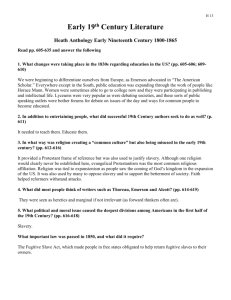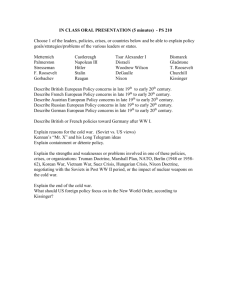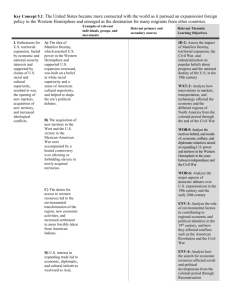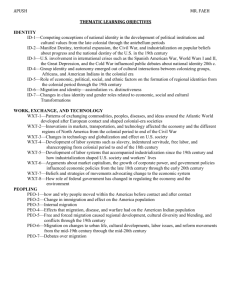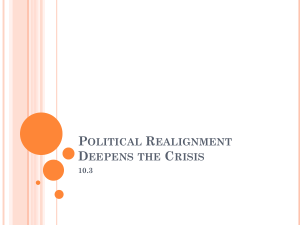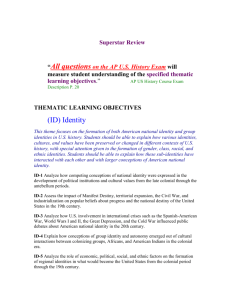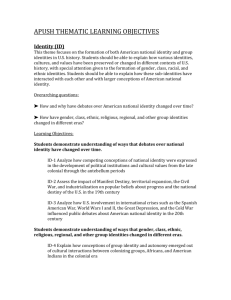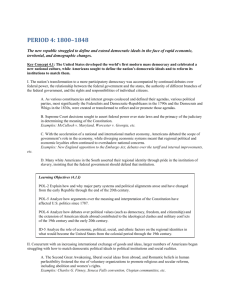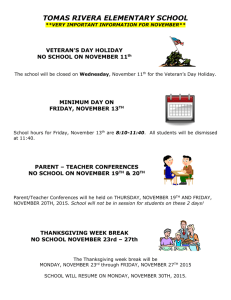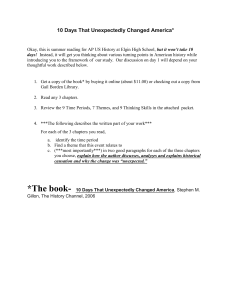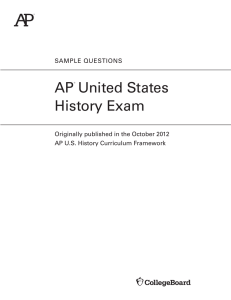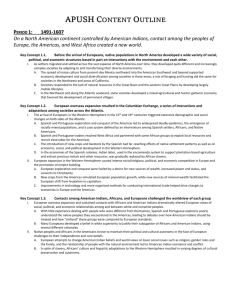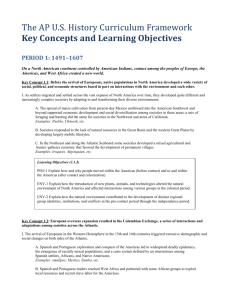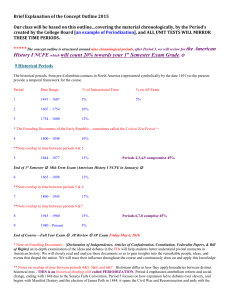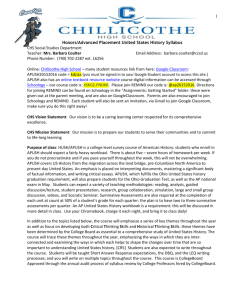File
advertisement
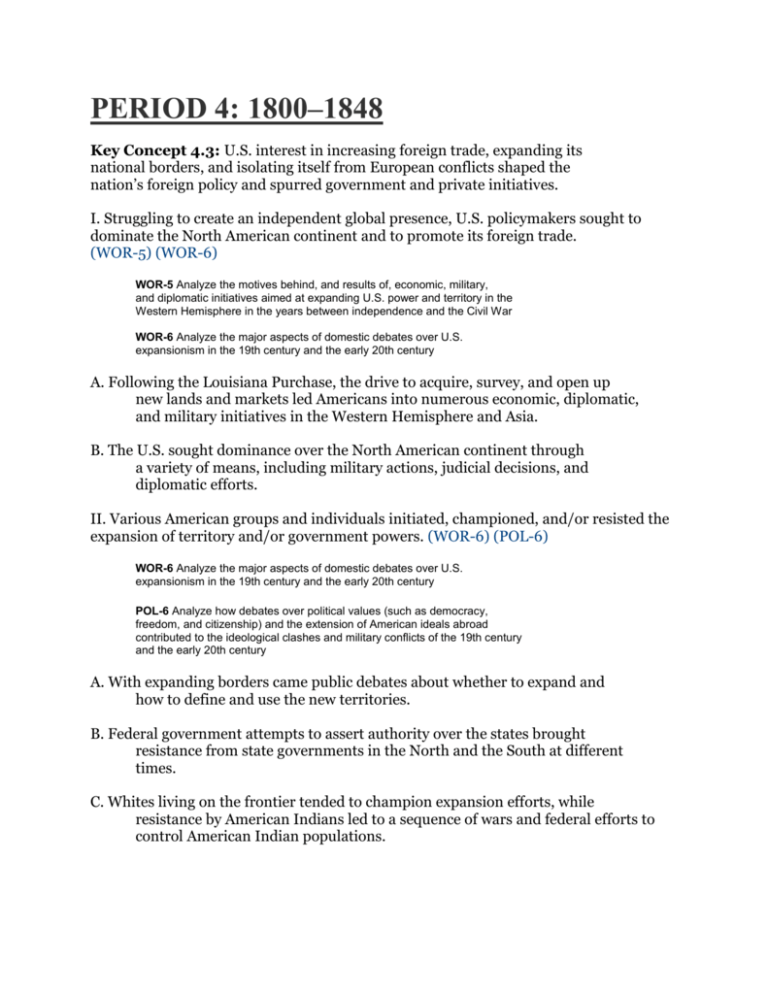
PERIOD 4: 1800–1848 Key Concept 4.3: U.S. interest in increasing foreign trade, expanding its national borders, and isolating itself from European conflicts shaped the nation’s foreign policy and spurred government and private initiatives. I. Struggling to create an independent global presence, U.S. policymakers sought to dominate the North American continent and to promote its foreign trade. (WOR-5) (WOR-6) WOR-5 Analyze the motives behind, and results of, economic, military, and diplomatic initiatives aimed at expanding U.S. power and territory in the Western Hemisphere in the years between independence and the Civil War WOR-6 Analyze the major aspects of domestic debates over U.S. expansionism in the 19th century and the early 20th century A. Following the Louisiana Purchase, the drive to acquire, survey, and open up new lands and markets led Americans into numerous economic, diplomatic, and military initiatives in the Western Hemisphere and Asia. B. The U.S. sought dominance over the North American continent through a variety of means, including military actions, judicial decisions, and diplomatic efforts. II. Various American groups and individuals initiated, championed, and/or resisted the expansion of territory and/or government powers. (WOR-6) (POL-6) WOR-6 Analyze the major aspects of domestic debates over U.S. expansionism in the 19th century and the early 20th century POL-6 Analyze how debates over political values (such as democracy, freedom, and citizenship) and the extension of American ideals abroad contributed to the ideological clashes and military conflicts of the 19th century and the early 20th century A. With expanding borders came public debates about whether to expand and how to define and use the new territories. B. Federal government attempts to assert authority over the states brought resistance from state governments in the North and the South at different times. C. Whites living on the frontier tended to champion expansion efforts, while resistance by American Indians led to a sequence of wars and federal efforts to control American Indian populations. III. The American acquisition of lands in the West gave rise to a contest over the extension of slavery into the western territories as well as a series of attempts at national compromise. (ENV-3) (POL-6) ENV-3 Analyze the role of environmental factors in contributing to regional economic and political identities in the 19th century, and how they affected conflicts such as the American Revolution and the Civil War POL-6 Analyze how debates over political values (such as democracy, freedom, and citizenship) and the extension of American ideals abroad contributed to the ideological clashes and military conflicts of the 19th century and the early 20th century A. The 1820 Missouri Compromise created a truce over the issue of slavery that gradually broke down as confrontations over slavery became increasingly bitter. B. As over-cultivation depleted arable land in the Southeast, slaveholders relocated their agricultural enterprises to the new Southwest, increasing sectional tensions over the institution of slavery and sparking a broad-scale debate about how to set national goals, priorities, and strategies.
